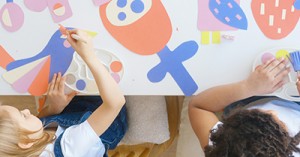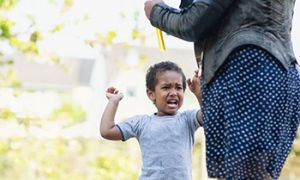Creating an Early Years Learning Framework (EYLF) curriculum plan involves several key steps to ensure it aligns with the framework’s principles and supports children’s learning and development. The following article provides a step by step guide on writing the EYLF curriculum plan.
Here is a step-by-step guide on writing the EYLF curriculum plan:
1. Observation
- Gather Information: Collect detailed information about each child’s current knowledge, strengths, interests, skills, and cultural background. Use methods like anecdotal records, learning stories, photographs, and work samples.
- Engage with Families: Include the voices of children and their families to understand the child’s context and provide a holistic view of their development.
- Document Observations: Keep detailed and organized records of observations to inform the next stages of the planning cycle.
2. Assessment
- Analyze Learning: Examine the observations to understand what and how the child is learning. Look for patterns, strengths, and areas for growth.
- Link to EYLF Outcomes: Connect your findings to the EYLF outcomes to ensure the learning experiences are aligned with the framework.
3. Planning
- Design Learning Experiences: Based on observations and assessments, create responsive and enriching plans. Collaborate with children and families to ensure the plans are relevant and engaging.
- Intentional Teaching: Plan experiences that are intentional and have clear learning outcomes. Ensure each activity has a purpose and is linked to the EYLF outcomes.
4. Implementation
- Deliver Activities: Implement the planned activities, ensuring they support the child’s learning and wellbeing. Reflect play-based learning and allow for child agency.
- Adapt as Needed: Be flexible and responsive to the children’s needs and interests during the implementation.
5. Evaluation
- Reflect on Effectiveness: Evaluate the success of the observations, planning, and teaching strategies. Use reflections to inform practice changes and extend learning.
- Continuous Improvement: Regularly review and adjust the curriculum plan to ensure it remains effective and relevant.
Additional Tips:
- Use Templates: Utilize available EYLF templates to streamline your planning process.
- Incorporate Nature-Based Activities: Given your interest, include activities that connect children with nature, fostering their curiosity and appreciation for the environment.
- Celebrate Achievements: Regularly acknowledge and celebrate children’s achievements to boost their confidence and motivation.
By following these steps, you can create a comprehensive and effective EYLF curriculum plan that supports children’s holistic development and learning.
Example Of A Learning Experience Linking With EYLF
Here’s an example of a learning experience plan that aligns with the EYLF principles and outcomes. This plan focuses on a nature-based activity, which I know you’re interested in.
Learning Experience Plan: Nature Scavenger Hunt
Learning Outcomes:
- Outcome 2: Children are connected with and contribute to their world
- Children become socially responsible and show respect for the environment.
- Outcome 4: Children are confident and involved learners
- Children develop dispositions for learning such as curiosity, cooperation, confidence, creativity, commitment, enthusiasm, persistence, imagination, and reflexivity.
Objective:
Children will explore the outdoor environment, engage in sensory experiences, and develop an appreciation for nature.
Materials Needed:
- Scavenger hunt checklist (with pictures for non-readers)
- Magnifying glasses
- Small baskets or bags for collecting items
- Clipboards and pencils
- Nature books for reference
Procedure:
-
Introduction
-
Gather the children and explain the activity. Show them the scavenger hunt checklist and discuss the items they will be looking for (e.g., leaves, rocks, flowers, insects).
-
Talk about the importance of respecting nature and being gentle with the environment.
-
-
Exploration
-
Take the children outside to a safe, designated area.
-
Encourage them to use their senses to explore and find the items on their checklist.
-
Provide magnifying glasses for a closer look at smaller items.
-
Assist children in documenting their findings by drawing or writing on their clipboards.
-
-
Discussion and Reflection
-
Return to the classroom and gather in a circle.
-
Invite children to share what they found and discuss their observations.
-
Use nature books to identify and learn more about the items collected.
-
Reflect on the experience and talk about how it felt to explore nature.
-
Extension Activities:
-
Art Project: Create a nature collage using the collected items.
-
Story Time: Read books about nature and the environment.
-
Science Experiment: Investigate the different types of leaves and their characteristics.
Assessment:
-
Observe and document children’s engagement and participation during the activity.
-
Note any particular interests or questions that arise.
-
Reflect on how the activity supported the learning outcomes and plan for future experiences based on children’s responses.
Family Involvement:
-
Share the scavenger hunt checklist with families and encourage them to do a similar activity at home.
-
Invite families to share photos or stories of their nature explorations.
This plan not only supports children’s learning and development but also fosters a connection with nature and encourages curiosity and exploration.
Involving Families In The EYLF Curriculum Plan
Involving parents in the Early Years Learning Framework (EYLF) curriculum is essential for creating a cohesive and supportive learning environment for children. Here are some effective strategies to engage parents:
1. Open Communication
-
Regular Updates: Share regular updates about the child’s progress and daily activities through newsletters, emails, or a communication app.
-
Parent-Teacher Meetings: Schedule regular meetings to discuss the child’s development, interests, and any concerns.
2. Collaborative Planning
-
Feedback Forms and Surveys: Collect parents’ insights and suggestions about the curriculum and their child’s learning experiences.
-
Parent Involvement in Activities: Invite parents to participate in classroom activities, field trips, or special events. This helps them feel more connected to their child’s learning environment.
3. Home-School Connection
-
Learning at Home: Provide parents with ideas and resources for extending learning at home. This could include activity sheets, reading lists, or simple science experiments.
-
Sharing Cultural Practices: Encourage parents to share their cultural traditions and practices, which can be incorporated into the curriculum to enrich the learning experience.
4. Celebrating Achievements
-
Showcase Children’s Work: Display children’s artwork, projects, and achievements in a way that parents can see and celebrate their child’s progress.
-
Special Events: Organize events like “Family Fun Days” or “Cultural Celebrations” where parents can see their child’s work and participate in activities.
5. Parent Education
-
Workshops and Seminars: Offer workshops on child development, parenting strategies, and the EYLF principles to help parents understand and support their child’s learning journey.
-
Resource Library: Create a library of books, articles, and online resources that parents can borrow or access to learn more about early childhood education.
6. Building Trust and Respect
-
Respectful Relationships: Build strong, respectful relationships with parents by being approachable, listening to their concerns, and valuing their input.
-
Cultural Sensitivity: Show respect for the diverse cultural backgrounds of families and incorporate their values and traditions into the curriculum.
By implementing these strategies, you can create a collaborative and inclusive environment that supports children’s holistic development and strengthens the partnership between educators and families.
Further Reading
The Planning Cycle To Document Children's Learning
Program Planning In OSHC Services
5 Stages Of The EYLF Planning Cycle
The Cycle of Planning
Intentional Teaching Strategies For Educators
Reflective Practices In Childcare
Spontaneous Play In Early Childhood
Child Theorists and Their Theories in Practice
EYLF Practices And Strategies To Implement Them
Guidelines For Documenting In Early Childhood Settings
Reference:
Lesson and Curriculum Plan, Twinkl







 Here is the list of the EYLF Learning Outcomes that you can use as a guide or reference for your documentation and planning. The EYLF
Here is the list of the EYLF Learning Outcomes that you can use as a guide or reference for your documentation and planning. The EYLF The EYLF is a guide which consists of Principles, Practices and 5 main Learning Outcomes along with each of their sub outcomes, based on identity,
The EYLF is a guide which consists of Principles, Practices and 5 main Learning Outcomes along with each of their sub outcomes, based on identity, This is a guide on How to Write a Learning Story. It provides information on What Is A Learning Story, Writing A Learning Story, Sample
This is a guide on How to Write a Learning Story. It provides information on What Is A Learning Story, Writing A Learning Story, Sample One of the most important types of documentation methods that educators needs to be familiar with are “observations”. Observations are crucial for all early childhood
One of the most important types of documentation methods that educators needs to be familiar with are “observations”. Observations are crucial for all early childhood To support children achieve learning outcomes from the EYLF Framework, the following list gives educators examples of how to promote children's learning in each individual
To support children achieve learning outcomes from the EYLF Framework, the following list gives educators examples of how to promote children's learning in each individual Reflective practice is learning from everyday situations and issues and concerns that arise which form part of our daily routine while working in an early
Reflective practice is learning from everyday situations and issues and concerns that arise which form part of our daily routine while working in an early Within Australia, Programming and Planning is reflected and supported by the Early Years Learning Framework. Educators within early childhood settings, use the EYLF to guide
Within Australia, Programming and Planning is reflected and supported by the Early Years Learning Framework. Educators within early childhood settings, use the EYLF to guide When observing children, it's important that we use a range of different observation methods from running records, learning stories to photographs and work samples. Using
When observing children, it's important that we use a range of different observation methods from running records, learning stories to photographs and work samples. Using This is a guide for educators on what to observe under each sub learning outcome from the EYLF Framework, when a child is engaged in
This is a guide for educators on what to observe under each sub learning outcome from the EYLF Framework, when a child is engaged in The Early Years Learning Framework describes the curriculum as “all the interactions, experiences, activities, routines and events, planned and unplanned, that occur in an environment
The Early Years Learning Framework describes the curriculum as “all the interactions, experiences, activities, routines and events, planned and unplanned, that occur in an environment


